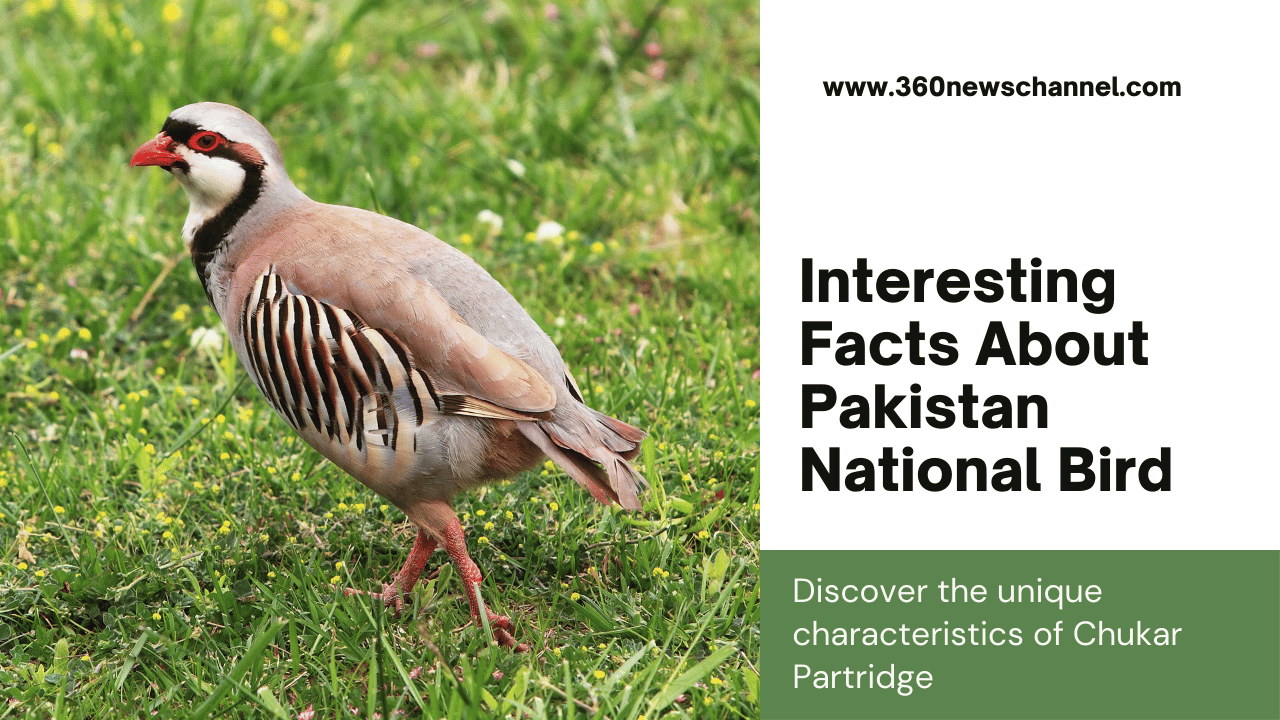Table of Contents
Introduction:
Pakistan diverse landscapes, from the towering Himalayan peaks to the tranquil Arabian Sea, are home to a wide variety of bird species. These habitats include lush forests, wetlands, deserts, and high mountain regions, making Pakistan a prime destination for bird enthusiasts. Among its many avian residents, the chukar partridge stands out, not only for its unique traits but also as the national bird of Pakistan.
Why is the Chukar Partridge a Pakistan National Bird?
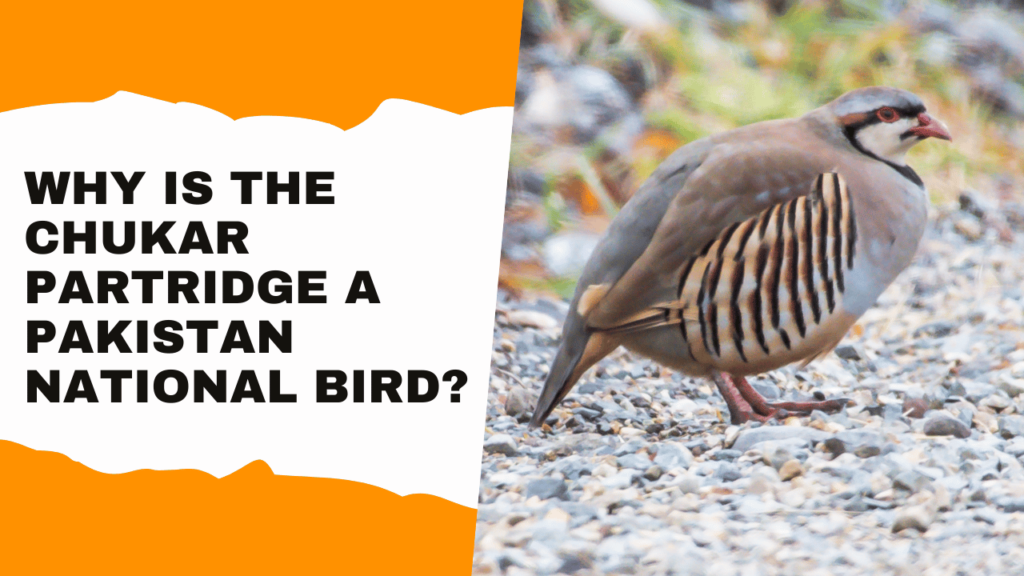
In 1985, the Chukar Partridge was officially declared a Pakistan national bird. This bird is native to various parts of the country, including Gilgit-Baltistan, Khyber Pakhtunkhwa, Balochistan, and Punjab. It thrives at a range of elevations, from sea level up to 4,000 meters. The chukar deep connection to the region and its presence in local culture and folklore make it a fitting symbol for Pakistan.
What are the Chukar Partridge interesting facts?
Appearance:
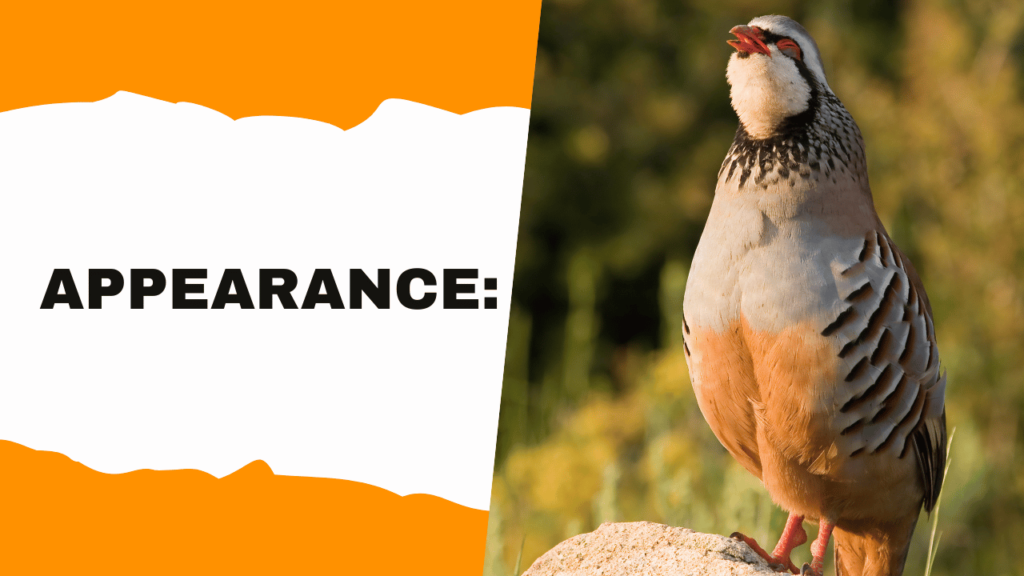
The chukar partridge is a striking bird with a rounded body, a short tail, and a length of about 32–35 centimeters. It weighs between 500 and 700 grams and has a distinctive look. Its upper body is greyish-brown or sandy-brown, which helps it blend into its rocky and desert surroundings. Its chest is a vibrant orange or rusty red, which stands out against its lighter belly. The bird also has a white face with a bold black stripe running across its eyes.
Males and females look similar, but males are usually a bit larger and more colorful. The chukar’s red bill, dark brown eyes, and short wings add to its unique appearance.
Behavior:

Chukar partridges prefer to stay on the ground but can fly short distances when needed. They live in small groups called coveys and spend most of their time searching for food on the ground. During the breeding season, they form monogamous pairs. Females build nests on the ground, often hidden among rocks, shrubs, or tall grass. They lay 8 to 20 eggs, which they incubate for about three weeks.
Calls and Communication:

Chukars are known for their distinctive calls, which they use to communicate with each other and alert their group to danger. These calls are commonly heard echoing through their rocky habitats. When threatened, chukars use their camouflage to blend into their surroundings and may take flight if necessary.
Diet and feeding habits:
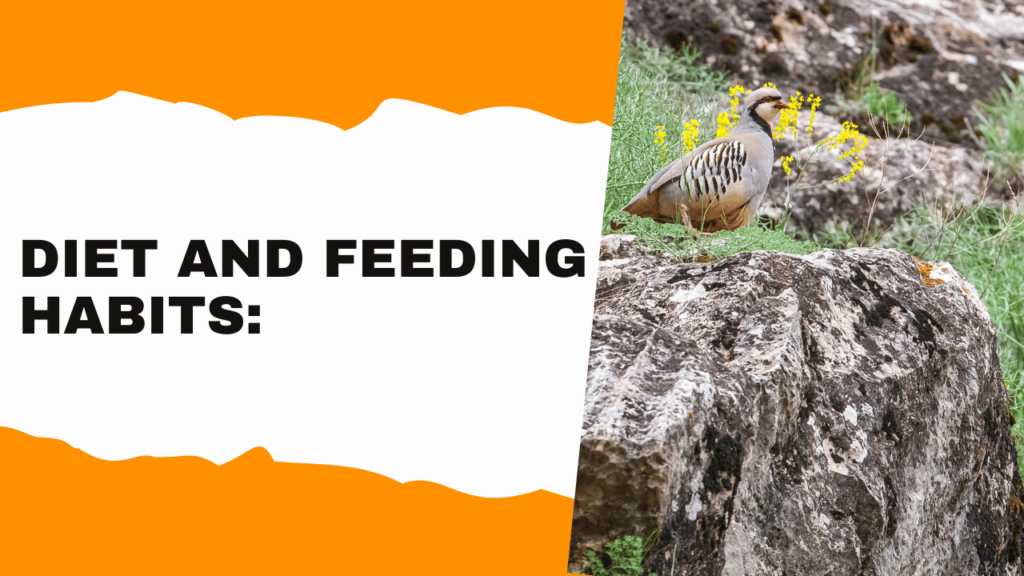
Chukar partridges have a varied diet that allows them to live in different environments. They eat a mix of plants and small insects. In summer, their diet mainly consists of grasses, leaves, buds, and seeds. In fall and winter, when plant food is scarcer, they eat more insects like grasshoppers and crickets.
Chukars are opportunistic feeders. They peck at the ground, dig into the soil, and turn over rocks to find food. They also climb shrubs and trees to eat fruits and seeds. Regular access to water is crucial for them, and they will travel long distances to find it.
Cultural and conservation importance:
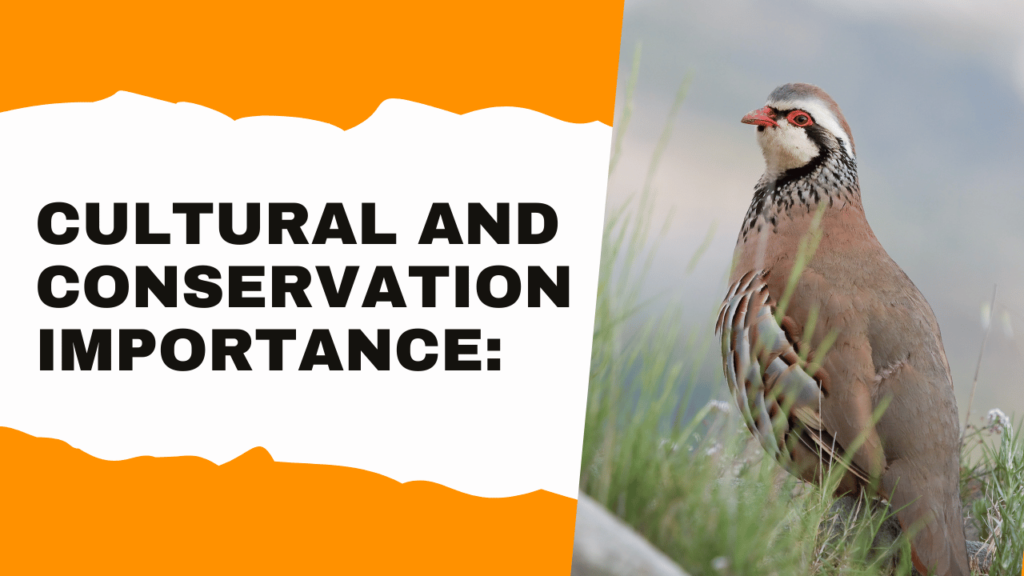
In Pakistan, the chukar partridge is known as “Chakor” or “Cheer,” with the name possibly derived from the Persian word “Shakar,” meaning “sugar,” which might refer to the bird’s sweet call.
Despite its cultural significance, the Chukar Partridge faces habitat loss and hunting challenges. Its status as the national bird emphasizes protecting this unique species and its environment.
Conclusion:
The chukar partridge is more than just a bird; it’s a symbol of Pakistan natural heritage. Its unique appearance, behavior, and calls make it a fascinating species. As the national bird, it represents the country’s commitment to conserving its natural resources and protecting its wildlife for future generations.
Information Disclaimer:
The information provided in this blog is for general informational purposes only. While we strive for accuracy, we make no guarantees about the completeness or reliability of the content. Readers are encouraged to verify information independently and consult with a professional for specific advice. We are not liable for any losses or damages in connection with the use of this blog.
FAQs
What is the national bird of Pakistan?
The national bird of Pakistan is the Chukar Partridge, also known as “Chakor.” This bird was named the national bird in 1985 because of its cultural and historical importance.
Why was the Chukar Partridge chosen as the national bird of Pakistan?
The Chukar Partridge was chosen as Pakistan’s national bird because it has a strong connection to the region’s culture and history. It’s a symbol of resilience and adaptability, qualities that resonate with the people of Pakistan.
Where can you find the Chukar Partridge in Pakistan?
You can find the Chukar Partridge in many parts of Pakistan, including the provinces of Gilgit-Baltistan, Khyber Pakhtunkhwa, Balochistan, and Punjab. It lives at various elevations, from sea level up to 4,000 meters in the mountains.
What does the Chukar Partridge look like?
The Chukar Partridge has a distinctive look with a greyish-brown upper body, a bright orange or rusty-red chest, and a white face with a black stripe across the eyes. It also has a red bill, dark brown eyes, and short, rounded wings.
What does the Chukar Partridge eat?
The Chukar Partridge has a diverse diet that includes grasses, leaves, buds, seeds, and small insects. It is an opportunistic feeder, meaning it eats whatever is available in its environment.
How does the Chukar Partridge communicate?
Chukar Partridges use a variety of calls to communicate. These calls help them stay in contact with their group and alert each other to potential dangers. Their distinctive calls can often be heard echoing through rocky hillsides.
How does the Chukar Partridge reproduce?
During the breeding season, Chukar Partridges form pairs. The female builds a nest on the ground and lays between 8 and 20 eggs. Both the male and female may help incubate the eggs, which hatch after about three weeks.
What threats does the Chukar Partridge face?
The Chukar Partridge faces threats like habitat loss and hunting. Despite these challenges, it continues to be a symbol of resilience and strength, underscoring the need for conservation efforts.
What cultural significance does the Chukar Partridge hold in Pakistan?
The Chukar Partridge is celebrated in Pakistani art, poetry, and folklore. Its status as the national bird highlights Pakistan’s rich natural heritage and the importance of preserving its unique biodiversity.
How can we help protect the Chukar Partridge?
To protect the Chukar Partridge, we need to conserve its natural habitats, regulate hunting practices, and raise awareness about its significance. Supporting conservation organizations and initiatives is also crucial for preserving this iconic bird for future generations.
What is the national bird of Pakistan?
The national bird of Pakistan is the Chukar Partridge, also known as “Chakor.” This bird was named the national bird in 1985 because of its cultural and historical importance.
Why was the Chukar Partridge chosen as the national bird of Pakistan?
The Chukar Partridge was chosen as Pakistan’s national bird because it has a strong connection to the region’s culture and history. It’s a symbol of resilience and adaptability, qualities that resonate with the people of Pakistan
Where can you find the Chukar Partridge in Pakistan?
You can find the Chukar Partridge in many parts of Pakistan, including the provinces of Gilgit-Baltistan, Khyber Pakhtunkhwa, Balochistan, and Punjab. It lives at various elevations, from sea level up to 4,000 meters in the mountains.
What does the Chukar Partridge look like?
The Chukar Partridge has a distinctive look with a greyish-brown upper body, a bright orange or rusty-red chest, and a white face with a black stripe across the eyes. It also has a red bill, dark brown eyes, and short, rounded wings.
What does the Chukar Partridge eat?
The Chukar Partridge has a diverse diet that includes grasses, leaves, buds, seeds, and small insects. It is an opportunistic feeder, meaning it eats whatever is available in its environment.
How does the Chukar Partridge communicate?
Chukar Partridges use a variety of calls to communicate. These calls help them stay in contact with their group and alert each other to potential dangers. Their distinctive calls can often be heard echoing through rocky hillsides.
How does the Chukar Partridge reproduce?
During the breeding season, Chukar Partridges form pairs. The female builds a nest on the ground and lays between 8 to 20 eggs. Both the male and female may help incubate the eggs, which hatch after about three weeks.
What threats does the Chukar Partridge face?
The Chukar Partridge faces threats like habitat loss and hunting. Despite these challenges, it continues to be a symbol of resilience and strength, underscoring the need for conservation efforts.
What cultural significance does the Chukar Partridge hold in Pakistan?
The Chukar Partridge is celebrated in Pakistani art, poetry, and folklore. Its status as the national bird highlights Pakistan’s rich natural heritage and the importance of preserving its unique biodiversity.
How can we help protect the Chukar Partridge?
To protect the Chukar Partridge, we need to conserve its natural habitats, regulate hunting practices, and raise awareness about its significance. Supporting conservation organizations and initiatives is also crucial for preserving this iconic bird for future generations.
How do you raise a Chukar Partridge?
Raising a Chukar Partridge involves providing a safe, spacious environment with plenty of food and water. They need a diet of grains, seeds, and insects. It’s important to protect them from predators and extreme weather conditions.
What does the Chukar Partridge sound like?
The Chukar Partridge has a distinct call that sounds like “chuk-chuk-chukar.” These sounds are used to communicate with each other, especially within their groups.
How can you tell a male Chukar Partridge from a female?
Male Chukar Partridges are usually slightly larger and more brightly colored than females. They also have a more pronounced black band across their face and neck.
How do you cook Chukar Partridge?
Chukar Partridge can be roasted, grilled, or cooked in stews. They have a rich flavor that pairs well with various herbs and spices. Cooking times vary, but it’s important to ensure the meat is thoroughly cooked.
Can you find Chukar Partridge for sale?
Yes, Chukar Partridges are sometimes sold for hunting and farming purposes. It’s important to buy them from reputable sources to ensure they are healthy and well-cared for.
What are Chukar Partridge eggs like?
Chukar Partridge eggs are small, speckled, and usually light brown or beige in color. A female can lay between 8 to 20 eggs per clutch, which hatch in about three weeks.
What is the lifespan of a Chukar Partridge?
In the wild, a Chukar Partridge can live up to 5-7 years. However, their lifespan can be shorter due to predators and environmental factors.
How fast can a Chukar Partridge fly?
Chukar Partridges can fly short distances at high speeds. They usually rely on their running ability to escape predators, but can take rapid, direct flights when necessary.
Can you eat Chukar Partridge?
Yes, Chukar Partridge can be eaten and is often considered a delicacy. It has a rich flavor and is used in various culinary dishes.
What is the myth of the Chukar?
In local folklore, the Chukar Partridge is often associated with love and longing. It’s said that the Chukar constantly gazes at the moon, representing unattainable desires.






